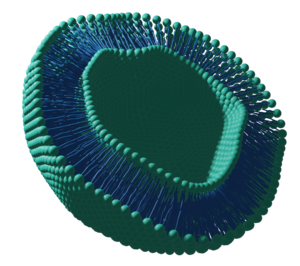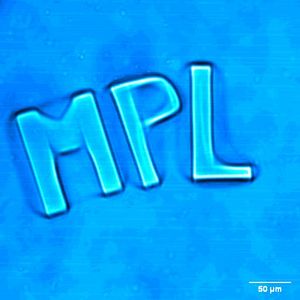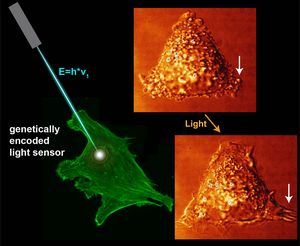Methods
Optical methods
Our lab utilized cutting-edge optical techniques to explore and manipulate biological systems at both the molecular and cellular level. Our methododologies include:
- Confocal Microscopy: We employ detailed 3D imaging of mesoscale protein structures, combined with fluorescent recovery after photobleaching (FRAP) to understand the dynamics of lipid membranes and protein patterns.
- Fluorescence Microscopy and Spatial Light Modulator (DMD): We use advanced imaging and spatial illumination of phototsensitive biomimetic systems to investigate the spatiotemporal effects in living matter.
- Single-Molecule Setup: Our setup will allow for fluorescent or label-free detection and quantification of single particles and biomolecules at lipid membranes.
Biomimetic Lipid Membranes

We engineer advanced lipid-based systems to mimic cellular boundaries, allowing us to investigate fundamental biological processes:
- Supported Lipid Membranes (SLB) and Giant unilamellar Vesicles (GUVs): We utilize planar lipid bilayers on solid supportsand large, cell-sized vesicles for studying membrane-associated phenomena, prividing insights into the mechanisms for membrane dynamics and mesoscale-protein formation at lipid interfaces.
- Phase Separated Lipid Membranes: By employing membranes with distinct lipid domains, we gain a deeper unterstanding of phase behavior and lipid-protein interactions.
- Topographically Molded Lipid Membranes: We create structured lipid surfaces that mimic the topography of cellular membranes. These are used to study protein pattern formation and interactions in the context of diverse membrane geometries, crucial for deciphering how physical structures influence biological processes.
Lithography and Microfluidics

We create micro- and nano-structured environments to study biological systems in precisely controlled conditions:
- Microstructured Biomimetic Environments: We custom-design 3D microenvironments that replicate specific biophysical parameters of tissues, providing a bottom-up context for studying cell assembly in well-defined environments.
- Microfluidic Devices: Utilizing lab-on-a-chip technology, we conduct high-throughput analysis and manipulation of tissue mimicries and multicellular systems. Additionally, we use microfluidic devices to generate vesicle systems to explore cellular processes in confined volumes.
- Surface Micropatterns: We engineer surfaces with specific cell adhesion patterns to control and observe cell behavior and organization, enabling studies of cellular responses to microenvironmental cues.
Cellular Systems

We are interested in the principles of cellular organization. Our research leverages the power of light to control and study biological systems and their morphological dynamics.
Contact
katja.zieske@mpl.mpg.de
Zieske Research Group
MPI for the Science of Light
Staudtstr. 2
D-91058 Erlangen, Germany





